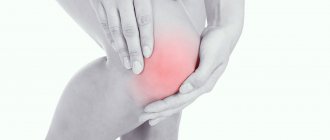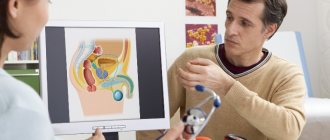For what reasons can your toes hurt?
The most common causes of pain:
- injuries;
- frostbite;
- reaction to insect bites;
- excessive load on the legs;
- infectious lesions of nails and skin, including fungal ones;
- joint diseases;
- swelling caused by chronic diseases.
In women, discomfort and numbness are often associated with wearing poorly chosen shoes. Over time, the foot becomes deformed due to compression, misalignment, or overuse. Thus, pain can be either a consequence of leg fatigue, or a sign of an already developed pathology of the articular joints. With moderate discomfort, if there is no redness of the skin, swelling or fever, help is limited to rest and applying ice. If the pain is severe, you should consult a doctor.
Foot pain
Gout
Arthritis
Diabetes
45426 05 March
IMPORTANT!
The information in this section cannot be used for self-diagnosis and self-treatment.
In case of pain or other exacerbation of the disease, diagnostic tests should be prescribed only by the attending physician. To make a diagnosis and properly prescribe treatment, you should contact your doctor. Foot pain: causes, what diseases it occurs with, diagnosis and treatment methods.
Definition
The foot consists of 26 bones, which, when connected to each other, form several joints, held together by numerous elastic muscles and strong ligaments. It bears the entire weight of the human body, so pain in the foot causes not only discomfort, but in many cases limits motor activity.
Foot pain is a common symptom that can be caused by a variety of reasons.
In some cases, when collecting anamnesis, the doctor needs only such characteristics of pain in the foot as its location and conditions of occurrence, as well as the presence of concomitant diseases and other symptoms that accompany this pain (numbness of the foot, itchy skin, etc.). In others, finding the cause of pain requires a thorough laboratory and instrumental examination.
Types of foot pain
Based on duration, they are distinguished:
- Acute
pain in the foot - this phenomenon is most often associated with injuries - bone fractures, ruptured or sprained ligaments, severe bruises. - Chronic
pain that bothers the patient for a long time, in some cases, in the absence of proper treatment, a person develops a forced type of gait, which is associated with attempts to maintain the function of movement, while sparing the affected limb. The causes of this condition can be both diseases of the foot itself and pathologies of various body systems.
According to localization they distinguish:
- Diffuse
pain – affects the entire foot. - Local
pain – clearly limited to a specific area.
Possible causes of pain in the foot
One of the main causes of pain is
traumatic injuries to the foot
(bruises, sprains, bone fractures). With fractures, the pain is sharp, and swelling is rapidly increasing. In many cases, the supporting function of the foot is lost. Bruises and sprains are characterized by moderate pain, swelling and hematomas. Support is preserved, sometimes limited.
The next reason is inflammatory processes
affecting the joints of the foot. These include gout, chondrocalcinosis (pseudogout), rheumatoid arthritis.
Gout is a disease that occurs due to a disorder in the metabolism of uric acid. The deposition of uric acid salts in the joints is called gouty arthritis. With this disease, the first metatarsophalangeal joint is most often affected, which is manifested by a severe attack of pain, redness of this joint, swelling, and fever. Typically, an exacerbation of gouty arthritis lasts 6–7 days.
Rheumatoid arthritis is a systemic disease that also affects the joints of the feet and hands. Characterized by morning stiffness and pain in the hands and feet.
Pain in the foot can be a symptom
of pathology of bone structures
. In this case, we can talk about diseases such as osteomyelitis, osteoporosis, bursitis of the metatarsal head, etc.
Osteomyelitis can result from open fractures, infected wounds, or surgical interventions on the foot. It manifests itself as an increase in pain and a deterioration in general condition. The pain is throbbing, bursting, intensifying with any movement.
In osteoporosis, bone strength is compromised due to decreased bone density. This condition is promoted by hormonal changes in women during menopause and during pregnancy, some endocrine diseases, insufficient supply of calcium and phosphorus from the outside, as well as excessive stress on the musculoskeletal system.
Pain in the feet with this disease is constant and intensifies with movement.
Bursitis of the metatarsal heads is a change in the articular capsules of the foot joints, associated with their increased trauma due to age-related thinning of the fatty layers that protect them. It manifests itself by the appearance of painful “bumps” in the projection of the joints of the feet.
To diseases of the ligamentous apparatus
foot pain syndromes include, for example, plantar fasciitis. The calcaneal fascia is a plate of connective tissue that starts from the heel bone and ends with attachment to the heads of the metatarsal bones. With increased loads, excess weight, and flat feet, the fascia is stretched and injured, which causes inflammation to develop in it. This condition is called plantar fasciitis and causes pain in the instep and sides of the foot.
A distinctive feature of this disease is also that the pain occurs in the morning, after a night's rest, intensifies with exercise, and in some situations can lead to lameness.
A condition where the fascia ossifies where it attaches to the heel bone and causes severe pain in the heel when walking is called a heel spur.
Diabetes may be a cause of foot pain
– a disease in which the microvasculature also suffers due to impaired glucose metabolism. Diabetic osteoarthropathy (a type of diabetic foot) primarily affects the metatarsal joints. The pain in the feet is not intense at first, but as the pathological process develops it becomes prolonged, appears even at rest, and severe deformation of the feet develops.
In the neuropathic form of diabetic foot, zones with hyperkeratosis are formed, and painful ulcers and cracks form in their place.
The ischemic form of diabetic foot is characterized by pain when walking, persistent swelling of the feet, and weakened pulsation of the arteries.
Diabetic foot with the development of gangrene, along with obliterating atherosclerosis and endarteritis, is one of the most serious complications of diabetes.
Flat feet
characterized by a change in the shape of the arch of the foot, which leads both to a redistribution of the load on the bones and muscles of the foot, and to compression of the vessels and nerves passing through that part of the sole that is not normally involved in the act of walking. The reasons for the development of flat feet include rickets suffered in childhood, wearing incorrectly selected uncomfortable shoes, weightlifting, congenital weakness of connective tissue, congenital difference in leg length, etc.
Inflammatory processes in the soft tissues of the foot
also cause pain. If infection gets into small wounds during a pedicure or the skin of the toes is injured, panaritium (purulent inflammation of the periungual tissues) may develop.
Panaritium is characterized by shooting pain in the affected finger, disturbing sleep, discharge of pus from the wound, redness and swelling of the finger.
An ingrown nail (onychocryptosis) is the ingrowth of the nail plate into the lateral edge of the nail fold. This condition manifests itself as jerking pain in the affected finger, swelling; a possible complication in the form of infection.
Which doctors should I consult for foot pain?
Pain in the foot brings significant discomfort and often makes it difficult to move, so you should decide in advance which doctor to see in order to avoid long standing in lines and unnecessary trips to the clinic. As a rule, an orthopedist is involved in the diagnosis, treatment and rehabilitation of people with deforming or traumatic damage to bones, joints, muscles, and ligaments of the musculoskeletal system. However, patients with diabetes first need to make an appointment with, and with vascular problems - with a phlebologist. Rheumatologists treat diseases associated with chronic connective tissue lesions. A traumatologist consults patients with foot injuries. If symptoms appear that resemble an ingrown toenail, osteomyelitis or panaritium, you should consult a surgeon.
In most cases, assistance can be provided on an outpatient basis, but sometimes hospitalization is required.
Diagnostics and examinations for foot pain The diagnosis of “Osteoporosis” is made on the basis of x-rays of bones and blood tests for calcium, phosphorus and other necessary indicators.
Pain after injury
If discomfort appears after wearing open shoes, you need to check your feet for bites, minor scratches and other injuries, changes in the shape or color of the nails. Often, infections cause inflammation and swelling. Most often, the tips of the toes hurt. If the pain is mild, you can first consult a therapist. If the finger is very swollen, red or blue, or occupies an unnatural position, this may indicate a serious injury: a fracture, dislocation, or severe bruise. In this case, you need to contact a traumatologist.
Pain due to joint pathologies
In case of swelling, constant severe pain, or deformation of the limbs, consultation with an orthopedic traumatologist or rheumatologist is necessary. The presence of articular pathologies is signaled by such signs as:
- frequency of unpleasant sensations;
- frequent swelling;
- deformation of articular joints;
- increase in temperature in the affected area.
Often, sharp pain in the toes indicates a dangerous disease - gout. This condition is caused by excess amounts of uric acid compounds in the body. Over time, its crystals (urates) accumulate in internal organs and joints. In most cases, the lower extremities are primarily affected. Deformation occurs first in the toes and then in the knees. Gout is characterized by periodic attacks with a sudden onset, when the patient wakes up in the middle of the night from acute pain, which is accompanied by severe redness of the skin, swelling, fever and signs of intoxication. Often, fingers hurt due to another common disease - arthritis. With this pathology, inflammation of the joint occurs and cartilage tissue is destroyed. The disease often develops after a primary illness, for example, tonsillitis. The infection can enter the joint through a small wound. Non-infectious arthritis can be triggered by repeated injuries, autoimmune disorders, and unbalanced nutrition. Sometimes the cause of pain is arthrosis. This degenerative disease also affects cartilage tissue and destroys joints, causing severe deformation and the formation of osteophytes - bone growths that significantly limit mobility. Over time, the patient develops severe lameness; walking requires a cane or other support, since the affected foot cannot cope with the load.
Causes of finger arthritis
The disease is an inflammatory process affecting the metacarpophalangeal, metatarsophalangeal and interphalangeal joints of the upper and lower extremities. Most often, it is not an independent disease, but develops against the background of other pathologies (rheumatic, infectious, metabolic). Our center's kinestherapists provide effective treatment for finger arthritis.
The following causes of the disease are identified:
- age (the disease develops more often in older people);
- disruption of the endocrine glands;
- minor bone damage;
- infections (flu, ARVI);
- heredity;
- injuries, bruises, previous operations;
- bad habits (nicotine, alcohol);
- disorders in the vascular system (deterioration of joint nutrition);
- stress (stress hormones worsen the composition of joint lubrication).
What to do if your toe hurts?
If severe pain occurs, you must:
- remove shoes and socks;
- provide limbs with rest, preferably in an elevated position;
- Avoid drinking alcohol, fatty and smoked foods.
If the pain is very severe, you can take a painkiller. If the temperature rises and swelling, an anti-inflammatory drug is required. If pain appears after a bruise, ice should be applied to the affected area. You should not warm your feet in a hot water bath before consulting a doctor. When moving, you should use a support to reduce the load on the limb. After your condition improves, try to get medical advice as soon as possible. If there is severe pain in the fingers, a number of diagnostic procedures may be required:
- laboratory tests (blood and urine, joint puncture, allergy tests);
- study of skin microflora;
- X-ray;
- MRI;
- CT;
- and other studies.
A thorough examination will reveal the presence of inflammatory diseases, changes in the shape and structure of joints and other abnormalities. The diagnostic results will allow the doctor to find out exactly the reason why your toes hurt and to correctly decide how to treat this disease.
Diagnosis of the disease
The diagnosis is made based on the patient’s complaints, anamnestic data, the results of an external examination and instrumental studies. The most informative is radiography. The resulting images clearly visualize changes in the structure of bone and cartilaginous tissues, characteristic of gout, deforming arthrosis, and some types of arthritis.
X-ray of the foot.
Using MRI and CT, you can assess the condition of connective tissue structures, blood vessels, and nerves. If an infectious process is suspected, biochemical studies are carried out to determine the species of pathogenic microorganisms.
Features of treatment
After the doctor determines why the patient's toes hurt, he will develop a treatment plan. In advanced cases, surgery may be required, but treatment is usually limited to conservative methods:
- drug therapy;
- physiotherapy;
- physical therapy.
Painkillers are necessary if your toe hurts very badly. Anti-inflammatory drugs and decongestants are also recommended. Sometimes taking chondroprotectors is required.
Physiotherapy improves blood circulation and metabolism, eliminates pain and swelling, and accelerates tissue recovery. Therapeutic exercise ensures the development of muscles and ligaments, which is necessary for proper distribution of the load on the legs, preventing repeated injuries and exacerbation of joint diseases. On the website you can find prices for services. To prevent pain, a healthy diet, wearing comfortable shoes, and avoiding excessive stress and hypothermia are necessary. It is also advisable to continue doing therapeutic exercises - this will help maintain muscle tone and healthy joint mobility.
We specialize in the treatment of the musculoskeletal system, even in severe stages of disease. For 10 years we have been helping thousands of patients avoid surgery.
Our doctors
This is the strongest team of experts who teach at the RUDN Department. We are the clinical base of leading universities, where the best doctors in Moscow, unique specialists from Russia and abroad are trained.
Treatment of arthrosis of the big toe
Treatment begins with a correct diagnosis. To make a diagnosis, the doctor carefully questions the patient about the medical history and complaints. He also performs inspection, palpation and x-ray of the thumb.
The goal of treatment is to slow the progression of the disease, reduce symptoms and relieve pain. The doctor recommends treatment depending on the stage of the disease.
Conservative treatment methods
Conservative methods:
- Special insoles
- Orthopedic shoes
- Physiotherapy
- Physiotherapy, incl. balneotherapy (sulfur and radon baths)
- Anti-inflammatory and painkillers
- Local injections, such as hyaluronic acid or cortisone-containing medications
Orthopedic products for arthrosis of the first toe
It is recommended to begin treatment by purchasing insoles that relieve the load on the big toe. In this case, the biomechanics of gait are partially or completely restored. This will significantly relieve pain in the thumb joint.
For patients with arthrosis of the first toe who wear medical compression stockings, there is a special version of the product with a relief zone for the first toe.
Surgical treatment
If conservative measures fail or there is significant joint change, the orthopedist may consider surgery.
One of the methods of surgical treatment of severe arthrosis of the first toe is arthrodesis - surgical immobilization of the toe. Immobilizing the joint relieves the patient of pain. Adjacent joints and an orthopedic cushion on the sole of the shoe compensate for the loss of movement.
If the axis of the finger is violated, arthrodesis can be combined with corrective osteotomy (dissection of the bone followed by restoration of its integrity along the physiological axis).1
Sources
1R. K. Marti, RJ van Heerwaarden: Osteotomies for posttraumatic deformities. AO-Foundation Publishing. Thieme-Verlag Stuttgart 2008 (ISBN 978-3-13148671-4)
eurocom e.V., Einlagenversorgung, 2. Auflage 2012, Hallux Rigidus. S. 26
Thieme.de, Spiraldynamik-Hallux Rigidus, Online veröffentlicht unter: www.thieme.de/de/gesundheit/spiraldynamik-hallux-rigidus-51958.htm (last access: 05/18/2018)
www.medon.de/uebungen_hallux_rigidus.html (last access: 05/18/2018)
Diagnosis and treatment
The most common causes of foot deformities
Foot deformities









